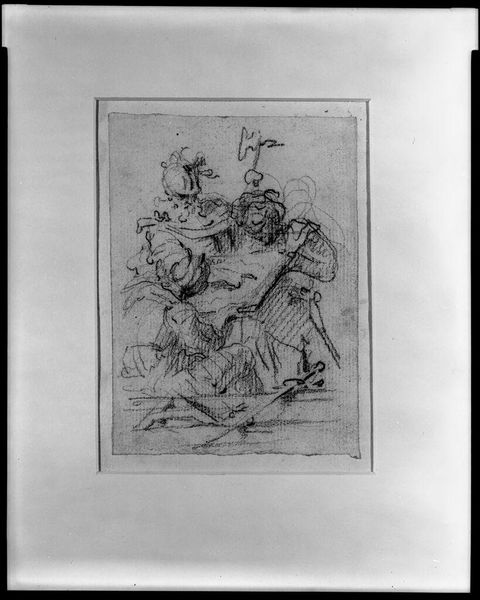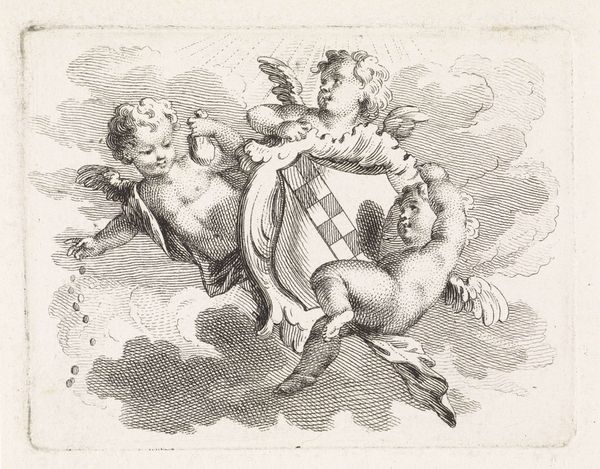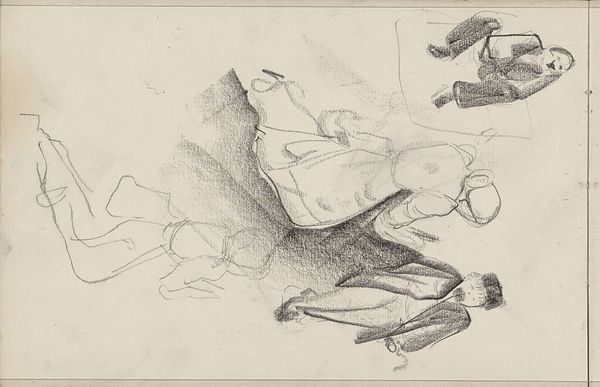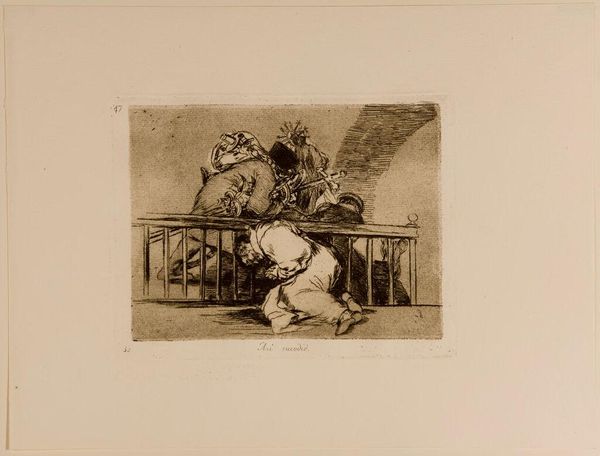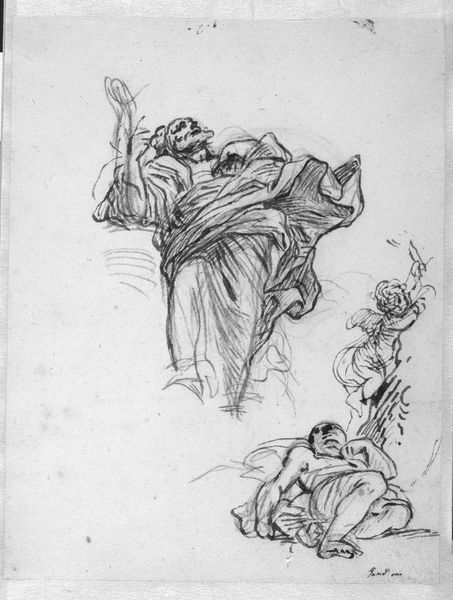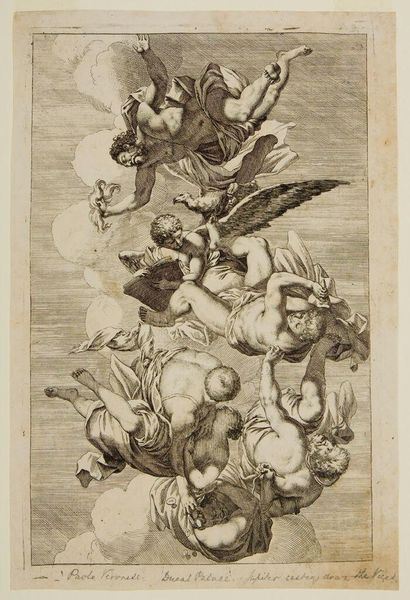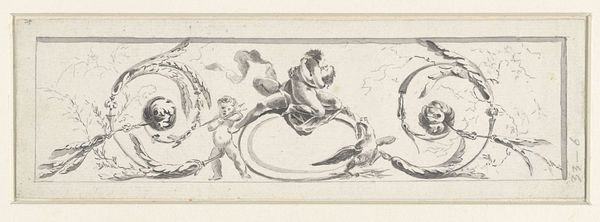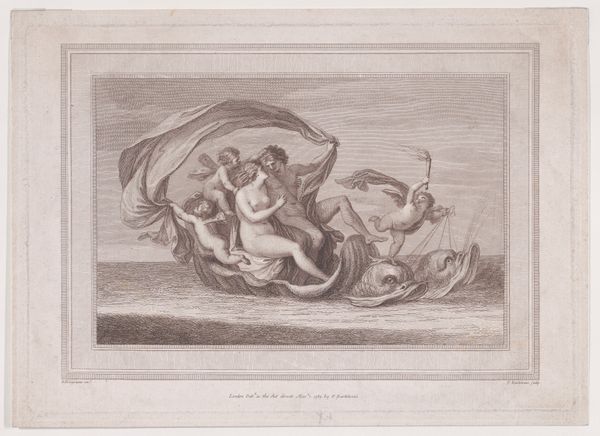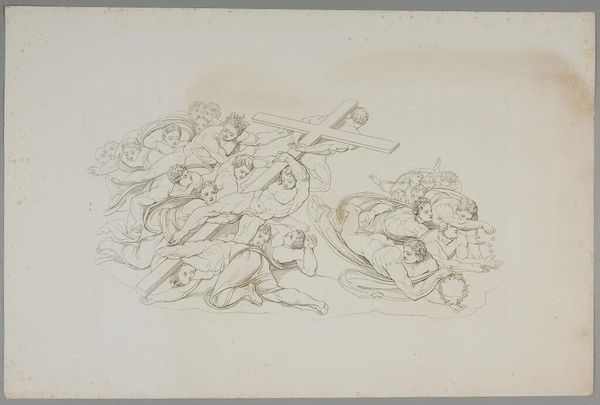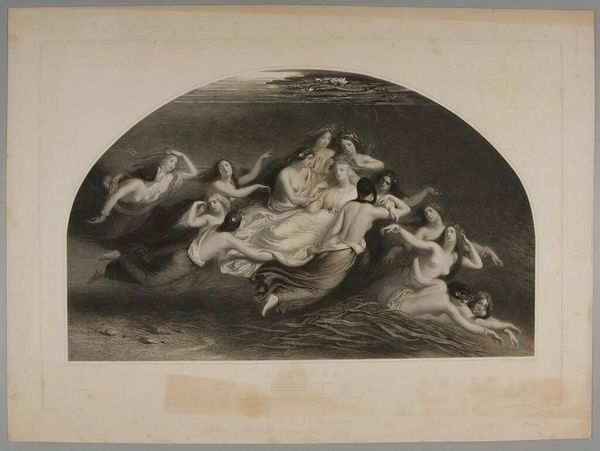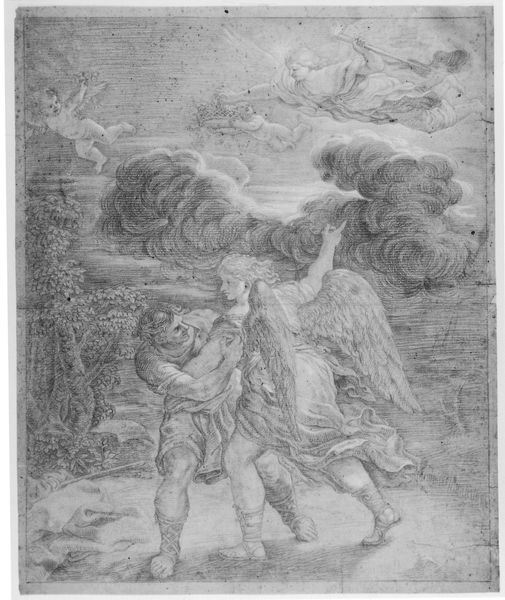
print, engraving
#
allegory
#
baroque
# print
#
history-painting
#
engraving
Copyright: Public domain
Curator: Piranesi's “Vedute di Roma”, a print from the Baroque period... what a trip. This work really catapults me into this dreamy vision—it's almost too fantastical to take seriously. It feels… excessive, like a Baroque sugar rush. What's your immediate take? Editor: Baroque excess indeed. But look closer—the medium itself, printmaking, allowed Piranesi to reproduce and circulate these "views" on a mass scale. The paper itself would have been relatively inexpensive, and the engravings, repeatable and exportable, contributing to a wider dissemination of Roman ideals of power and glory to consumers and a new public. Curator: Interesting. When I see these sweeping scenes—architectural fantasies interwoven with divine figures—it’s easy to get swept away by the sheer drama. But you are reminding me about this idea of history as theater and architecture's stage! How can people reproduce what has been staged. It’s a very strange and fascinating idea for a creative mind. What do you mean by consumption here? Editor: I mean that in the early age of modern capitalism these images become another good. This engraving had to have some consumption value in and of itself, since people paid for copies. This kind of labor generates money; that engraving, this print is capitalistic enterprise even when it displays angelic subjects or Roman grandeur. Think of paper not as background but medium of power, labor, economic exchange, etc. Curator: Paper, the silent workhorse, doing so much work in the shadow! Editor: It is precisely that! Think of those cherubs. They feel, at first, like window dressing or decoration or stage craft even. But Piranesi’s ability to render and mass-produce his visions shows how even ‘taste’ and 'the aesthetic' can be manufactured. What you call excess is really marketing, salesmanship... an idea rendered and then traded! Curator: Piranesi's "sugar rush" turning out to be economic engine. I think that awareness makes even more compelling. Editor: It does, and remember to note the absence of colour. Those dramatic effects, they come from sharp contrast and light, achievable through relatively simple tools like needles, and mordant to erode away the material—labour over the alchemical nature of pigment, for a broader impact. Curator: The black and white intensifies, becoming so much more than grayscale. So, to really *see* Piranesi, one has to consider the social impact, paper economy, as well as personal imagination, the allegorical drama? Editor: Absolutely. That intersection is where art becomes something bigger than aesthetics. A web where Piranesi has brought Rome into contact with the global economy.
Comments
No comments
Be the first to comment and join the conversation on the ultimate creative platform.
